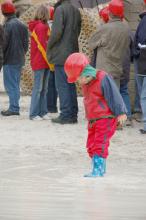
I was recently invited to talk about the image the aggregates industry presents to the outside world and look at how this could be improve
One thing that struck me with preparing for this presentation is that this sector has a lot going for it - some great people and unusual operations, but what is common to almost every site is the drive to improve biodiversity and sustainability. The sheer number of projects and efforts put into these areas are clear to me in my role as editor of ABE and it is easy to see that the industry has done much to clean up its act over the last 10 to 15 years
But talking to the people gathered at the meeting after my presentation, it seems that the industry is not always well informed about best practice elsewhere in the industry, so this knowledge is not being transferred and acted upon. If we can't communicate these achievements within our own sector, what hope have we got of passing the right messages on to the outside world? Well, in May this year there is the perfect opportunity in the form of European Minerals Day - www.mineralsday.eu - which is scheduled to take place from 13-15 May at quarry and extractive minerals sites all over Europe. Participating sites will be throwing open their gates to host site visits, nature tours and educational days for the general public or invited groups
In preparing my presentation, it was clear that the closed gates and security fences that surround quarries is one of the major problems when it comes to quarries and public perception. These barriers are vital in terms of safety but they are not helping local communities to understand either the need for aggregates or the nature conservation work which the industry is closely involved in
It seems that many urban dwellers who take good roads, railway lines, schools and hospitals for granted are totally divorced from the fact that without aggregates these facilities would just not exist
Communities close to an active quarry may not fully understand the industry - the only way they see the material is when it leaves the quarry by truck and many do not realise that the aggregates from their local quarry are actually used within their own region and are not transported miles and miles away
Even people who live close to a restored quarry often do not associate the facilities and wildlife reserves with the quarry. This is an issue of timespan - very few people who object to the opening of a new quarry are still around 30 to 50 years later when the restored site is returned to public use
The only way to change this perception is to try to be more open, so if you haven't already done so, why not be a part of the European Minerals Day this year?







